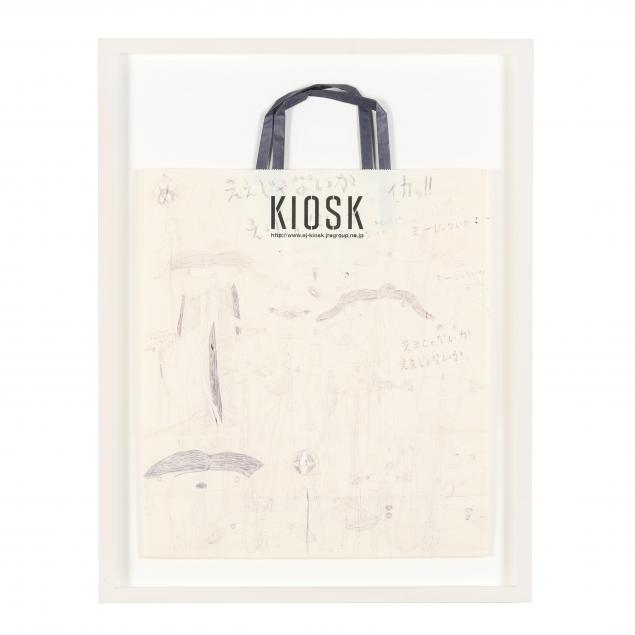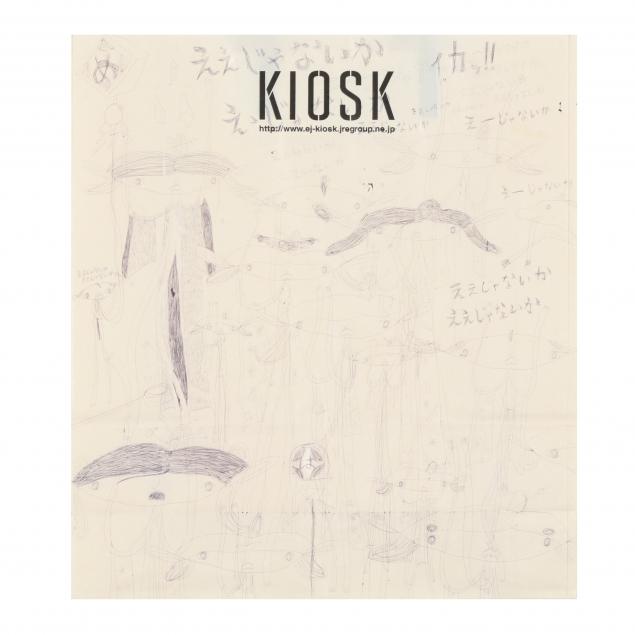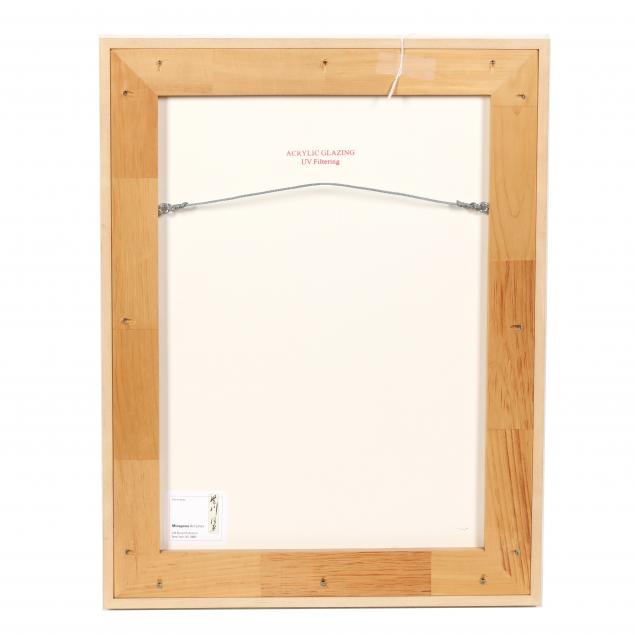
Lot 1200
Shintaro Miyake (Japanese, b. 1970), Drawing on Kiosk Bag
Explore more items like this one.
Visit our Asian Arts Department Asian Arts
Lot Details & Additional Photographs
Shintaro Miyake is a leading contemporary artist in Japan with a distinctive style anchored with the character "Ms. Cute" who appears in many of his art works. His figures with long loose arms and legs, wide faces, and almost always with a smile delight collectors and audiences. He lives and works mainly in Tokyo, sometimes going live performances where he creates artworks on the spot, or dresses up as one of his characters. The whimsical and humorous nature of his oeuvre has continued to fascinate and attract the attention of viewers internationally with several international solo shows.
Framed dimensions 20 1/2 x 15 3/4 in., Sight size 17 x 12 1/2 in.
From the Estate of the late Diego Cortez, New York and North Carolina
Diego Cortez (1946-2021), an art curator and filmmaker, was a cultural cornerstone in New York City who helped shape the art, music, and film scene from the 1970s forward. Among his incalculable list of accomplishments, Cortez is credited with launching the career of Jean-Michel Basquiat when he included him in his major 1981 exhibition New York/New Wave.
Cortez (née James Curtis), was raised in Geneva, Illinois, and went on to attend Illinois State University and later the School of the Art Institute of Chicago for a Master's degree. He changed his name to Diego Cortez in 1973 when moving to New York in honor of his hometown of Geneva, a Hispanic neighborhood. Early on, Cortez developed and fostered numerous connections with major figures in New York and he established himself as a key player. He worked as a studio assistant for artists Dennis Oppenheim and Vito Acconci and later directed music videos for rock bands Blondie and Talking Heads. He also wrote Private Elvis, a photographic book about Elvis Presley's time in the army in West Germany.
Cortez cofounded the Mudd Club in 1978, a hybrid nightclub/art space in Tribeca that was frequented by celebrities, artists, and musicians. It was on the dance floor of the Mudd Club that he first met Basquiat. In 1981, Cortez curated New York/New Wave, a major avant-garde exhibition at MoMA PS1 in Queens. It featured a new generation of artists as well as art superstars, such as Basquiat, Andy Warhol, Nan Goldin, Keith Haring, Fab Five Freddy, Robert Maplethorpe, and others. New York/New Wave was a turning point in the art world, as it ushered in anti-establishment art forms such as graffiti art and street art.
The transformative ideas Cortez put in motion throughout his life are threaded throughout New York City and beyond. In this collection you will see links between the Cortez as the collector, the artists and makers of these works, as well as the subjects. This selection of objects from Cortez's collection touches upon seminal connections he had throughout his monumental life and career.
Good estate condition.



